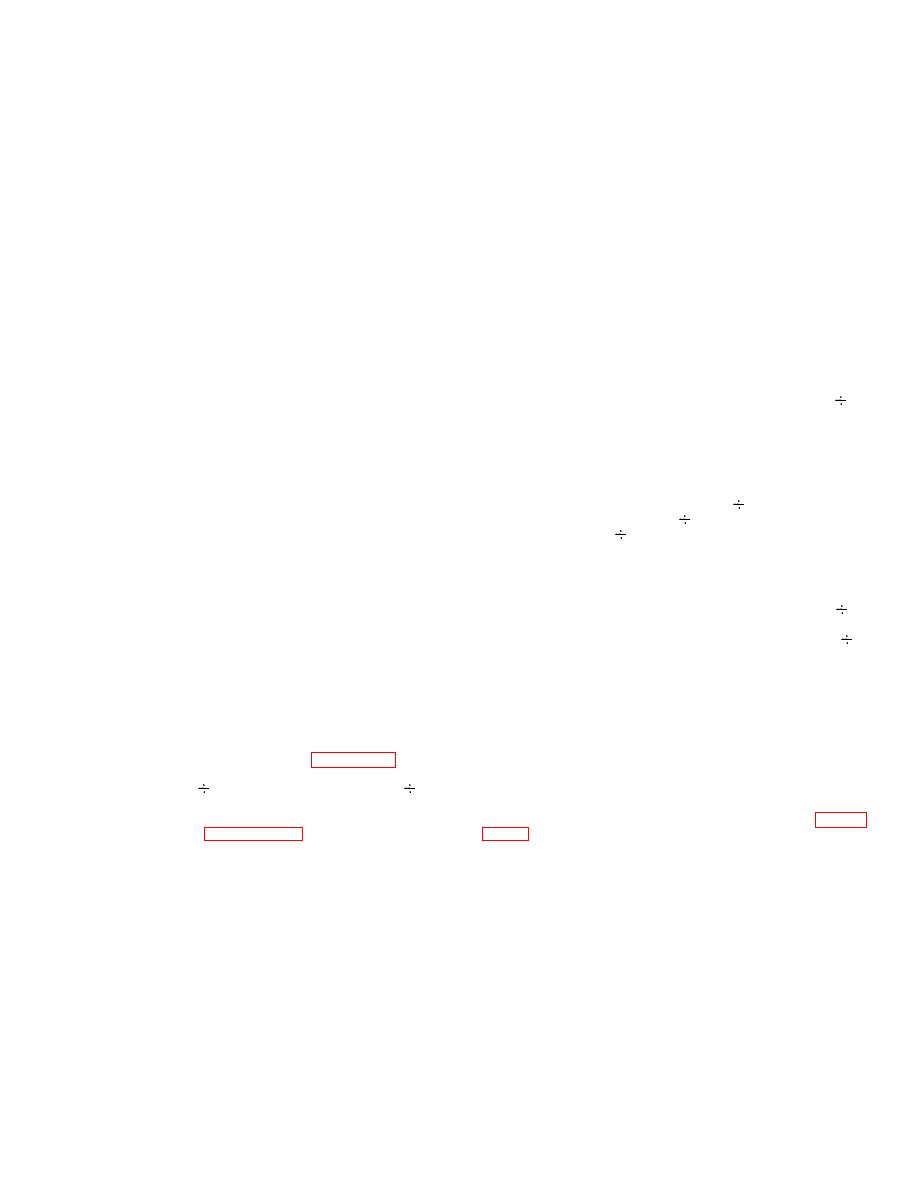 |
|||
|
|
|||
|
|
|||
| ||||||||||
|
|  TO 31R2-2GRC171-2
TM 11-5820-815-14
NAVELEX 0967-LP-544-5010
4-79. The variable divider functions by counting N
signal turns level shifter amplifier Q7 off. With Q7 off,
input cycles of the vco frequency to produce one output
+12 V dc applied through L10, L11, R17, C18, L8, CR3,
pulse to the frequency/phase detector. For the example
L7, and R15 to ground develops approximately 6 V dc at
frequency of 334.350 MHz, N would be 26,748 to give
the cathode of diodes CR2 and CR3. Zener diode VR1
12.5 kHz at the frequency/phase detector. Dividing
applies +5.1 V dc through C15 and L9 to the anode of
26,748 by the regenerative divider fixed division ratio of
diode CR2 causing CR2 to be back biased. This blocks
2, leaves a count of 13,374 to be counted by the
the synthesizer rf signal from being applied to the receive
remaining circuits of the variable divider. To accomplish
injection input to receiver rf module A3. Forward-biased
this, at the beginning of each count period. preset
diode CR3 allows the synthesizer transmit rf signal to be
pulses (waveforms G and W) preset the .+A
applied through C14 to the transmit rf input of power
programmable counter to a count of 14 and the +Np
amplifier module A8.
programmable counter to a count of 334. The 25-, 50-,
and 100-kHz frequency select information from the radio
4-75. In receive mode, a logic 1 key 2 signal turns
control (350 kHz for the example frequency) is preset
level shifter amplifier Q7 on. With Q7 on, +12 V de
into the . A program- mable counter to set its count at
applied through L10, L11, R17, R16, and Q7 to ground
14. It therefore requires 14 input pulses (waveform ) to
develops approximately 4 V dc at the junction of R16,
get one out- put pulse (waveform X). The 1-, 10-. and
R17, C18, and L8. This voltage is applied to the anode
100-MHz frequency select information (334 MHz for the
of diode CR3 through C18 and L8. Zener diode VR1
example frequency) is preset into the
NP
applies +5.1 V dc through C15, L9, and CR2 to the
programmable counter to set its count to 334. For this
cathode of diode CR3. This back-biases diode CR3
counter, it requires 334 input pulses (waveform Z) to get
blocking the synthesizer rf signal from being applied to
one output pulse (waveform G). At the beginning of a
the transmit rf input of power amplifier module A8.
count period just following the preset pulses, the 2-
Forward-biased diode CR2 allows the synthesizer
modulus prescaler divides by 41 to produce one output
receive injection signal to be applied through C17 to the
pulse (waveform F) for every input pulse (waveform A).
receive injection input of receiver rf module A3.
The output pulse is fed to both the Np programmable
counter (waveform Z) and A programmable counter
4-76. When switching from receive mode to transmit
(waveform I). The A programmable counter counts 14
mode, current flows through CR3 to back-bais CR2. This
of these pulses after which time it feeds back a logic
results in some overlap where both diodes are on at the
control signal (waveform H) to the 2-modulus prescaler
same time (make before break). This prevents switching
to change its division ratio to 40. For the remainder of
transients from being reflected back through the power
the period, the 2-modulus prescaler divides by 40. As a
amplifier to affect vco frequency which could result if the
result of this, for the first 14 pulses counted by the Np
transmit/receive switch were to open while switching
programmable counter, the 2-modulus prescaler divides
(break before make). In a similar manner, current flows
by 41. For the remaining 320 pulses counted by the N
through CR2 to back-bias CR3 when switching from
programmable counter. the 2-modulus prescaler divides
transmit to receive mode.
by 40. The total number of input pulses to the 2-modulus
prescaler would therefore be 14 (41) + 320 (40) or
4-77. At the receiver injection output, capacitor C17
13,374 which is the desired count following the
and inductor L9 form a high-pass filter to attenuate 30-
regenerative divider. The output pulses (waveforms G
MHz spurious (if frequency) that may be present in the
and W) fed to the frequency/ phase detector are also fed
receiver injection signal.
back as preset pulses to preset the programmable
counter to start a new count period.
variable divider consists of the regenerative divider, 2-
A programmable counter,
Np
4-80. Regenerative Divider. Reference designators
modulus prescaler,
programmable counter, and various control logic. The
apply to digital section A2A7.
To divide the vco
simplified schematic diagram of the complete variable
frequency by 2, the regenerative divider circuit (figures
divider presented by figure FO-11 includes a timing
diagram for radio control frequency of 334.350 MHz.
that mixes the incoming vco frequency with one-half the
Encircled letters appearing on the variable divider
vco frequency which is derived from the if output of the
simplified schematic diagram make reference to
double balanced mixer. The circuit operates as follows:
waveforms shown on the timing diagram.
The
RfamplifierQ3 amplifies the vco frequency and applies it
waveforms pictured are theoretical and may not appear
through transformer T1 to the rf port of double balanced
as square waves when measured with a wide-band
mixer Z1. The if output of mixer Z11 feeds rf amplifier
oscilloscope. In the text, reference to waveforms will be
Q4 whose output circuit is tuned by transformer T2 and
by letter, ie, waveform A, waveform B, waveform AB,
varactor diode CR2 to one-half the vco frequency. When
presetpulse G, etc.
starting up, frequency components at the mixer if output
that
4-18
|
|
Privacy Statement - Press Release - Copyright Information. - Contact Us |